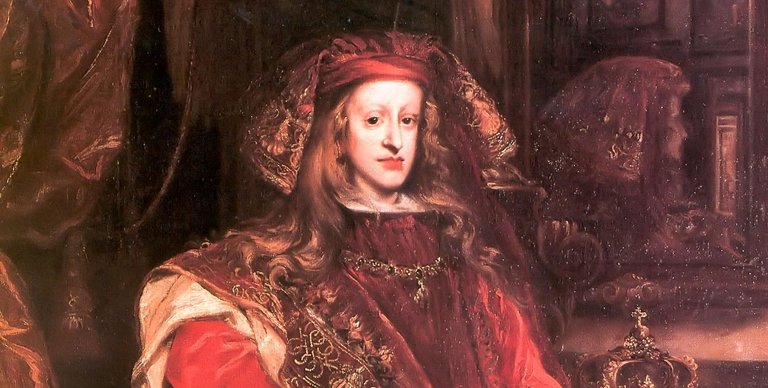Charles II VS Genetics

Portrait of Charles II, King of Spain. Court artists in every way tried to portray the monarchs more beautifully than they are in life ...
The House of the Habsburgs was considered the most powerful dynasty in medieval and Renaissance Europe. In the early 12th century, the family dominated in Switzerland, Austria, Hungary, Italy, Spain. By the 16th century, the dynasty had already expanded its influence in the Philippines and America. Nevertheless, their successful rule had a sharp end because of problems with closely related crosses.
Distinctive features of the representatives of the Habsburg dynasty were convex chins and lips, as well as high mortality among newborns. By the time the last representative of the genus, who occupied the Spanish throne, Charles II, was born, the coefficient of inbreeding was 25%, that is, almost 80% of marriages were between close relatives.

For example: if an ordinary person in the fifth generation can boast 32 relatives, then Charles II had only 10 of them, and even 8 of them were descendants of Queen Juan I Mad.

Charles II became the most obvious victim of prolonged incest.
Because of such a strong incest, the appearance of the king suffered. The characteristic chin of the Habsburgs in Charles II acquired a hypertrophic form. His elongated lower jaw and tongue did not allow the king to properly chew food and talk. With a growth of 192 cm, the king still had a very large head. The monarch began to walk and spoke very late. It also happened because Charles II was a long-awaited heir. His brothers and sisters died early, so he was treated like a baby with a king under 10 years old.
He became king in four years, as the regent of his mother rules, until his majority. In 1675 the king was recognized as an adult, but it was obvious to everyone that he was not able to rule the country. Charles was extremely painful and frail, suffered from softening of bones, scrofula and fever, until four years could not do without the nurse's milk and could barely walk with the help of a tutor. Apparently, he had epileptic seizures.

For the rest of his life, Carl was like a child. He could not read and write.
Charles was capricious, morose, distrustful, secretive, prone to unreasonable unrest and often fell into melancholy. Because of gluttony, he developed an upset stomach and chronic fever. By the fourth decade, Charles looked like an old man: lame, bald, toothless and almost blind. He ordered to deliver and put on his bed the relics of St. Francis of Assisi, believing that touching them would allow him to cure his ailments (no). Charles in general at the end of life showed a pathological interest in the corpses, having commanded to remove from the crypt the remains of their ancestors, and for a long time considering them.
He died at 38, without leaving an heir, although he was twice married (but we will not blame his wives).
King Charles II VS genetics - 0: 1
